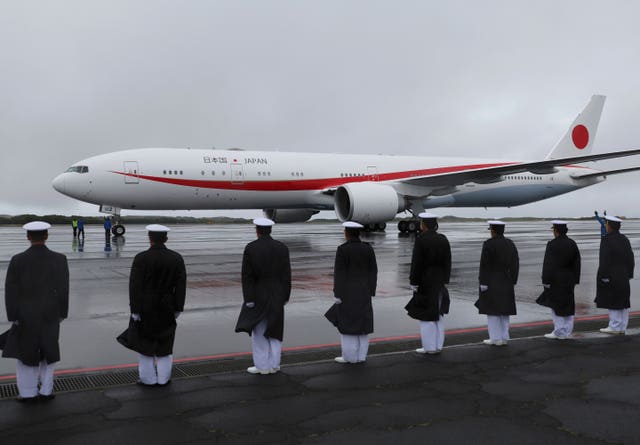Japanese emperor visits Iwo Jima to honour war dead
The island was the scene of a major Second World War battle in 1945.

Japan’s Emperor Naruhito visited Iwo Jima on Monday to pay tribute to those who died on the island where one of the Second World War’s harshest battles was fought 80 years ago.
The visit by Naruhito and his wife, Empress Masako, both born after the war, is their first to the island.
They were scheduled to pray at three memorial sites and meet with representatives of bereaved families and descendants of former island residents.
Naruhito, in his 65th birthday remarks in February noting the 80th anniversary of the end of the war, stressed the importance of remembering the wartime history and telling younger generations about the tragedy.
Japan invaded large areas of Asia in the name of his grandfather, then Emperor Hirohito.

The island, whose official name today is Iwo-to, was the site where Japanese and American soldiers faced off in one of the war’s fiercest battles.
The battle of Iwo Jima lasted from February 19 to March 26 1945, as the United States tried to take control of a key strategic point to advance to mainland Japan.
Despite expectations by the US that they would overwhelm the Japanese within days, Japanese soldiers used underground tunnels and resisted for five weeks in a part of war history that has inspired many novels and movies.
Nearly all of the more than 21,000 Japanese and nearly 7,000 US troops were killed.
More than half of the remains of the Japanese are still unaccounted for.
All 1,100 residents of Iwo Jima, except for 103 men drafted as military employees, were forcibly evacuated to mainland Japan.
Former residents and their descendants have been allowed to visit the island for memorial events but not to live.
The emperor’s Iwo Jima visit comes about 10 days after Japan and the UW held a joint memorial service to mark the end of the battle of Iwo Jima in late March, when Japanese Prime Minister Shigeru Ishiba and Defence Minister Gen Nakatani joined US Secretary of Defence Pete Hegseth, as well as other officials and several veterans who survived the battle, to honour the war dead from both sides.





